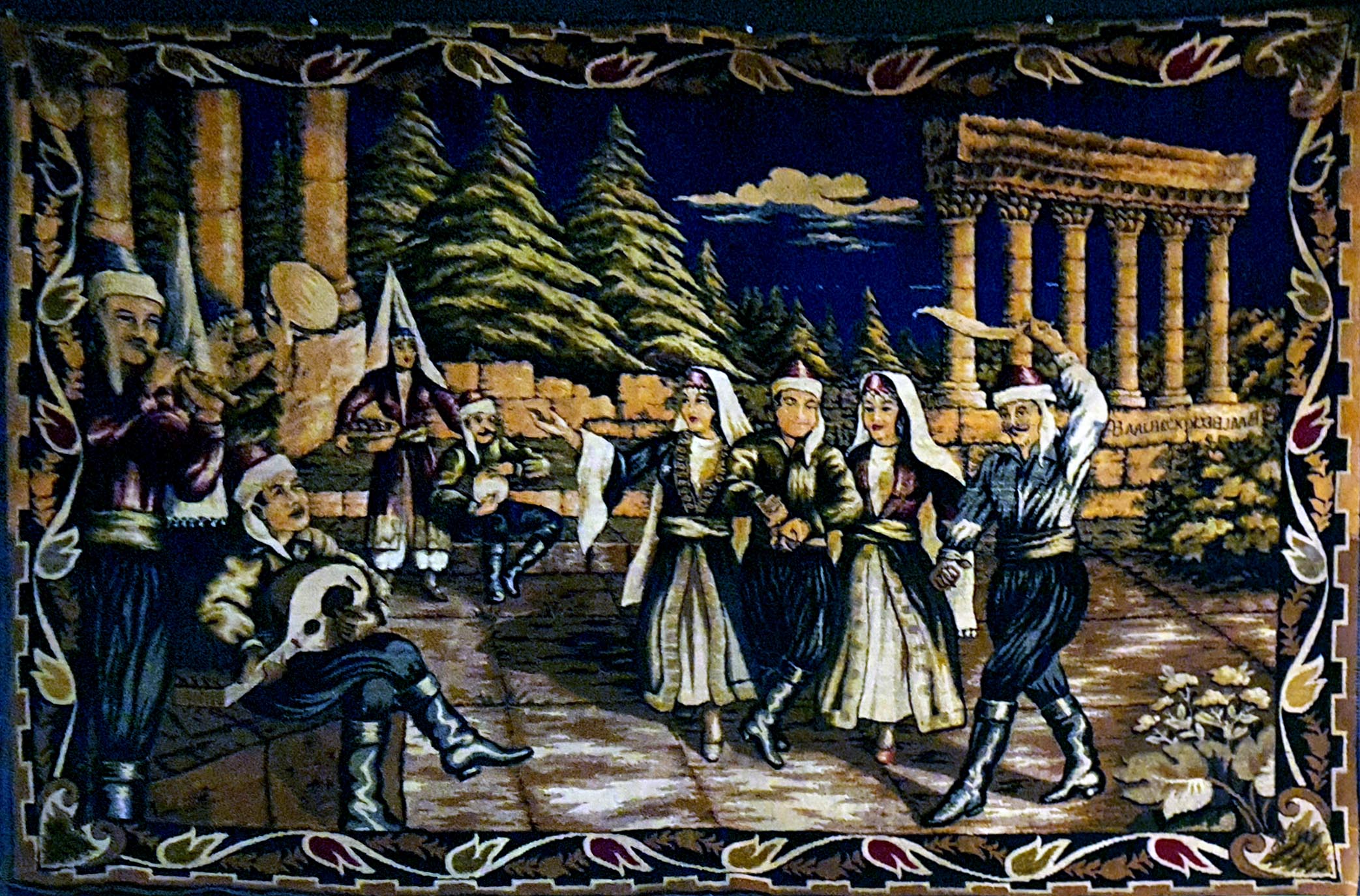The Dabke (دبكة)

–
By Stephanie Wigan
Sydney, along with New South Wales and Melbourne, has recently embarked on “re-opening” after several months in a covid-induced lockdown. At this time, it seems fitting to reflect on the much-loved, famous Lebanese traditional dance which is an essential component in many happy gatherings and celebrations.
Meaning and History
Dabke translates to “stomping of the feet”. This traditional Lebanese dance dates back many centuries to a time when villagers in Lebanon and the Levante region, would fix the roof of their homes and buildings by stomping on them. At the time, the roofs were flat, made of tree branches and mud. When the weather started to change, the mud would crack. In order to fix the roof, the Lebanese would hold hands, form a line, and start stomping their feet while walking on the roof so that the mud would adjust.
As years passed and improved methods of building were developed, the Dabke was handed down through families as a tradition of knowing how their culture was built[i] .
The Dance and Music
The Dabke has continued in Lebanese families for generations, spreading throughout the continents of the world along with the spread of the diaspora.
The dance itself is a combination of circle dancing and line dancing, with a leader (the “Lawweeh”) who is generally a more experienced dancer and light on his feet. Everyone holds hands and stamps the floor with their feet in time with the rhythm of the music that is being played.
The Middle Eastern instruments commonly played as background music for the Dabke include the Mijwiz (reed clarinet), the Tablah (small hand-drum) and the Oud (a pear-shaped stringed instrument).
There are many songs that can accompany the Dabke, and often people have their favourites which incite joy, excitement and bring back happy memories. Some suggested songs[ii] include:
-
-
-
- Tanoura (Fares Karam)
- Dal3oona (Melhem Zein)
- Dammi Falastini (Mohammed Assaf)
- Jamalik Shou Mhem (Ali Deek)
- Etla3 3a Lebnan (Sarah El Badawiya)
-
-
Ultimately, at any Lebanese wedding, celebration or happy gathering (covid restrictions permitting) the Dabke continues to be one of the highlights of the event which is enjoyed across the generations and throughout the world.
The next time you step on the dancefloor, hold hands and start dancing the Dabke; you are continuing the legacy and culture of this timeless, much-loved and famous Lebanese tradition.
[i] https://www.google.com/amp/s/dancehistorydevelopment.wordpress.com/2013/05/09/the-dabke-an-arabic-folk-dance/amp/
[ii] https://www.arabsounds.net/5-dabke-songs-that-will-make-you-wanna-dance/
